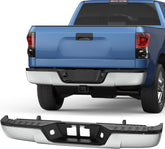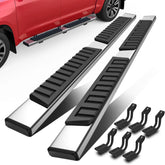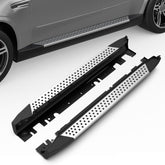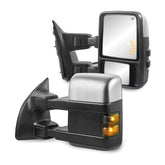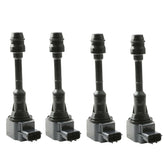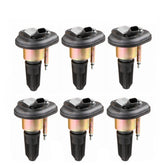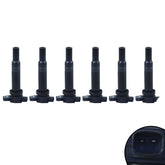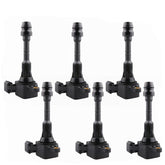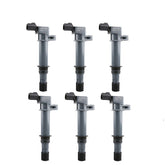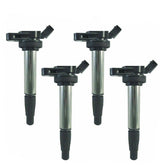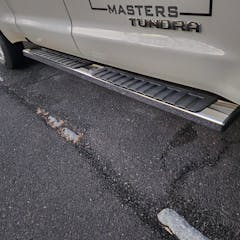Filter
9 results
20
- 10
- 15
- 20
- 25
- 30
- 50
Best selling
- Featured
- Best selling
- Alphabetically, A-Z
- Alphabetically, Z-A
- Price, low to high
- Price, high to low
- Date, old to new
- Date, new to old
Sort
Sort by:
- Featured
- Best selling
- Alphabetically, A-Z
- Alphabetically, Z-A
- Price, low to high
- Price, high to low
- Date, old to new
- Date, new to old
-
Ignition Coils For 2006-2011 Honda Civic 1.8L GN10324 C1580 UF582 Set(4)Vendor: MOSTPLUSDetails: Brand: MOSTPLUS Warranty: 1 Year Surface Finish: Brand New Interchange Part Number: HONDA # 30520RNAA01 STANDARD # UF582 Other Part # 5C1637, E1082, 52-1874, IC662, 30520-RNA-A01, UF-582 BORG WARNER # E1082 BECK ARNLEY # 1788393 DENSO # 6732305 DELPHI # GN10324 WELLS # C1580...
- $61.09
- $61.09
- Unit price
- / per
-
Ignition Coils For 2003-2006 Nissan Altima Sentra 2.5L L4 5C1395350 UF-350 4PCSVendor: MOSTPLUSDetails: Brand: MOSTPLUS Warranty: 1 Year Surface Finish: Brand New Interchange Part Number: 5C1395, E380, 52-1746, IC480, 22448-8H310, 22448-8H311, 22448-8H315, UF-350 Fitment Type: Direct Replacement Fitment: MAKE MODEL YEAR ENGINE NISSAN ALTIMA 2003 - 2006 2.5 L4 NISSAN Sentra 2003 - 2006 2.5 L4...
- $49.99
- $49.99
- Unit price
- / per
-
Ignition Coils For Chevy Trailblazer GMC Canyon Envoy C1395 UF-303 Set of 6Vendor: MOSTPLUSTWO YEARS WARRANTY Features · Brand New Ignition Coils· Direct replacement· Interchange Part Number: UF303, 12568062, 19300921, 8-12568-062-0, 5C1392, E255, 52-1743, GN10114, IC414T Fitment YEAR MAKE MODEL ENGINE 2004 - 2006 CHEVROLET COLORADO L4 2.8L 2004 - 2006 CHEVROLET COLORADO L5 3.5L 2004...
- $73.99
$86.99- $73.99
- Unit price
- / per
-
Ignition Coils For 2007-2009 Hyundai Santa Fe Kia Optima Rondo V6 2.7L Set(6)Vendor: MOSTPLUSDetails: Brand: MOSTPLUS Warranty: 1 Year Surface Finish: Brand New Interchange Part Number: UF558,5C1624, E1058, 52-1863, IC638, 27301-3E400, 27301, 27301-3E410, UF-558,C1567 Fitment Type: Direct Replacement Fitment: 2007-2009 Hyundai Santa Fe V6 2.7L 2010 Kia Magentis L4 2.4L 2007-2010 Kia Magentis V6 2.7L 2007-2010 Kia Optima V6...
- $49.99
- $49.99
- Unit price
- / per
-
Ignition Coils For Nissan Altima Rogue Sentra Versa Infiniti FX50 M56 E1049 Set(3)Vendor: MOSTPLUSDetails: Brand: MOSTPLUS Warranty: 1 Year Surface Finish: Brand New Interchange Part Number: UF431, C1445, 2730039800, 27300-398002730039800, 5C1435, 1788288, 37300-398001788288, 230054, 52-1777, IC551, 610-58653, DQ-2172 Fitment Type: Direct Replacement Placement on Vehicle: Front Fitment: 2003 Kia Sorento 3.5L V6 2004 Kia Sorento 3.5L V6 2005...
- $49.43
- $49.43
- Unit price
- / per
-
Set(6) Ignition Coils For Infiniti I35 QX4 Nissan Altima Maxima Quest V6 3.5LVendor: MOSTPLUSSpecification Warranty: 1 Year Brand: MOSTPLUS Brand New OE Number: 22448-8J115, UF349 Fitment: MAKE MODEL YEAR ENGINE INFINITI I35 2002-2004 V6 3.5L INFINITI QX4 2002-2003 V6 3.5L NISSAN ALTIMA 2002- 2006 V6 3.5L NISSAN FRONTIER 2005-2012 V6 4.0L NISSAN MAXIMA 2002-2007 V6 3.5L NISSAN...
- $59.89
- $59.89
- Unit price
- / per
-
Ignition Coils For 2002-2006 Acura RSX 2006-2011 Honda Civic 2002-2009 CR-V 4PCSVendor: MOSTPLUSDetails: Brand: MOSTPLUS Warranty: 1 Year Surface Finish: Brand New Interchange Part Number: 30520RRA007, 30520PRAA01, 1788358, 5C1382, UF311, UF583, 30520PNA007, C540, GN10370 Fitment Type: Direct Replacement Fitment: 2002-2006 Acura RSX 2003-2007 Honda Accord L4 2.4L 2006-2011 Honda Civic L4 2.0L 2002-2005 Honda Civic L4 2.0L...
- $59.00
- $59.00
- Unit price
- / per
-
Ignition Coils For Dodge Jeep Mitsubishi 3.7L V6 4.7L V8 UF270 C1231 Set(6)Vendor: MOSTPLUSFeatures Brand: MOSTPLUS Warranty: 1 Year Interchange Part Number: C1231 UF270 56028138AF 56028138 56028138AB 56028138AD 5C1114, E232, E329, E419, 52-2034, 56028138, 56028138AB, 56028138AD, 56028138AE, 56028138AF, IC243, UF-270, UF-297, UF-399 Application Chrysler Aspen 2007 4.7 Dodge Dakota 2000-2007 4.7 Dodge Dakota 2004-2008 3.7 Dodge...
- $59.99
- $59.99
- Unit price
- / per
-
Ignition Coils For 2008-2013 Toyota Scion 2009-2013 Matrix 1.8L L4 UF596 Set(4)Vendor: MOSTPLUSTWO YEARS WARRANTY Specification · Brand New Ignition Coils· Interchange Part Number: UF596, UF-596, UF-619, 90919-02252, 90919-02258, E1119,52-2126, IC686, IC722,C1714· Direct replacements Fitment YEAR MAKE MODEL ENGINE 2011-2015 LEXUS CT200H L4-1.8L 2010 PONTIAC VIBE L4-1.8L 2008-2014 SCION XD L4-1.8L 2010-2015 TOYOTA COROLLA...
- $48.49
$60.13- $48.49
- Unit price
- / per


